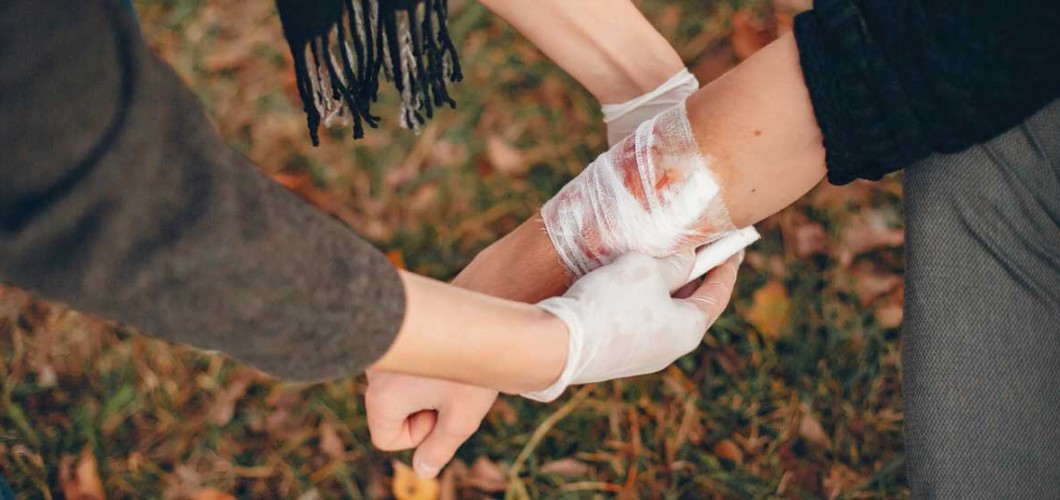
First Aid Methods for Cuts and Injuries
Cuts and injuries are common accidents in daily life. These incidents, ranging from minor cuts to deep wounds, require proper first aid intervention to reduce the risk of infection and speed up recovery. In this article, we will discuss the correct first aid methods for treating cuts and injuries in detail.
Why Are Cuts and Injuries Important?
Cuts and injuries disrupt the skin's integrity, increasing the risk of infection. Additionally, they can cause severe bleeding and may require medical intervention. Proper first aid practices help control bleeding, reduce infection risk, and accelerate the healing process.
First Aid Steps for Cuts and Injuries
1. Ensure Safety
First, ensure your own safety. Stay away from sharp objects and clean your hands. Using gloves or a clean cloth can help reduce the risk of infection.
2. Stop the Bleeding
- Apply gentle pressure to the wound using a clean cloth, gauze, or bandage.
- Hold the pressure until the bleeding stops (usually 5-10 minutes).
- If the bleeding does not stop, increase the pressure and, if necessary, apply a second bandage.
3. Clean the Wound
- Wash around the wound with warm water and soap. Avoid applying soap directly to the wound.
- If there are foreign objects, carefully remove them using sterile tweezers.
- Disinfect the area with an antiseptic solution (such as povidone-iodine or hydrogen peroxide).
4. Cover the Wound
- For small cuts, use a clean bandage or adhesive dressing.
- For deep or wide wounds, cover the area with sterile gauze and secure it with a bandage.
- Change the bandage regularly and monitor the wound’s healing process.
5. Keep the Wound Elevated
To slow down the bleeding, keep the injured area above heart level. This can also help prevent swelling.
What to Do in Case of Serious Injuries?
You should seek immediate medical assistance in the following cases:
- If the bleeding does not stop within 10 minutes.
- If the wound is deep or wide.
- If bone or muscle tissue is visible.
- If there is a foreign object inside the wound that cannot be removed.
- If the wound was caused by an animal bite or rusty object, increasing the risk of tetanus.
Special First Aid Cases
Knife or Sharp Object Injuries
- If a sharp object is embedded in the wound, do not attempt to remove it.
- Cover the area around the wound with sterile gauze and seek medical assistance.
Puncture Wounds
- Deep puncture wounds may have minimal external bleeding but can cause internal organ damage.
- If possible, place a clean cloth over the wound, apply light pressure, and call for emergency help.
Burn-Related Wounds
- If the wound was caused by a burn, rinse the area with clean water and cover it with a sterile cloth.
- If the burn is severe, seek medical attention immediately.
Dirty or Infected Wounds
- If the wound came into contact with broken glass, rusty metal, or a dirty surface, clean it immediately.
- Check if your tetanus vaccine is up to date; if not, seek medical help.
First Aid for Children and the Elderly
- Children’s skin is more sensitive, so be cautious when applying antiseptics.
- Healing processes in the elderly may be slower, so watch for signs of infection.
- Keep children calm by gently cleaning the wound and distracting them.
Things to Consider When Treating Injuries
- Do not apply cotton directly to a bleeding wound, as fibers may get into the wound.
- Avoid using harsh substances like alcohol or iodine directly on the wound, as they can damage tissue.
- Allow the wound to breathe to promote faster healing.
Conclusion
Proper first aid practices for cuts and injuries help reduce infection risk and speed up recovery. The key first aid steps include stopping the bleeding, cleaning the wound, and covering it appropriately. Seeking medical help in serious cases is crucial. By taking a first aid training course, you can improve your ability to protect yourself and those around you.

Leave a Comment